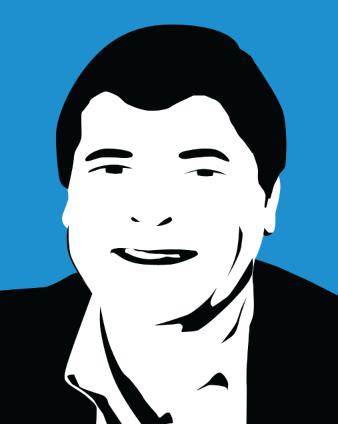Partner:
 Thank you to SAP for underwriting CXOTALK.
Thank you to SAP for underwriting CXOTALK.
 My head has been spinning since SAP and more than 17,000 of its customers and partners descended on Orlando, FL, for the annual SAPPHIRE NOW and ASUG conferences. As noted in my previous blog “Following the Red Thread of Innovation at SAPPHIRE NOW,” insightful external thought leaders, SAP experts, and customer speakers knocked the ball out of the park this year. They all agreed: Innovation is important, and we must adopt and ultimately “consume” the new technology and solutions it brings.
My head has been spinning since SAP and more than 17,000 of its customers and partners descended on Orlando, FL, for the annual SAPPHIRE NOW and ASUG conferences. As noted in my previous blog “Following the Red Thread of Innovation at SAPPHIRE NOW,” insightful external thought leaders, SAP experts, and customer speakers knocked the ball out of the park this year. They all agreed: Innovation is important, and we must adopt and ultimately “consume” the new technology and solutions it brings.
What about innovation adoption? What are the segments of a market and customers we must address to drive this?
What is innovation adoption?
To define a complex concept like “innovation adoption,” we must first look at standard definitions and build a consensus-based description that “works” for our specific view of the market. There’s certainly no shortage of academic and business research to work from – namely, the Everett Rogers model that uses a normal distribution to segment the market, Geoffrey Moore’s seminal works “Crossing the Chasm” and “Inside the Tornado” that describes specific tactics.
Personally, I liked the definition from dictionary.com:
Innovation adoption:
1. A model that classifies adopters of innovations based on their level of readiness to accept new ideas. Innovative adoption characteristics are assigned to groups to show that all innovations go through a predictable process before becoming widely adopted.
2. The groups consist of early adopters, early majority, late majority, and laggards
Who are these groups of innovation adopters, and what differentiates them?
Figure 1: Adoption lifecycle model
Like the beginning of a hockey game – “Here’s the starting lineup of the innovation adoption team!”
Innovators:
- The true geeks who buy on the promise of technology and often regarded as true visionaries
- The first to try new ideas and things
- Risk takers who skillfully leverage multiple information sources to make their decision
- A relatively small segment in number, but much larger in terms of influence
Early adopters:
- Early pioneers who are willing to take a hit and also regarded as visionaries who rely on “gut feel” and experience.
- Larger than Innovators in size and critical to the success of innovations
Early majority:
- The more mainstream segment of the market – and more than twice the size of the first two groups
- A group that likes new things and innovations, but prefer to wait and see if an innovation is “successful” before adopting it themselves
- Followers of innovators and early adopters for ideas, influence, and opinions
Late majority:
- Same size as the early majority
- People who only adopt innovations when forced to do so
- A segment that is harder to persuade and influence, especially through advertising and online information
- High regard for the advice and influence of friends and colleagues
Laggards:
- Same size as the innovators and early adopters, but with an entirely different mindset
- The last group to adopt an innovation – kicking and screaming
- Naysayers of any change, only embracing and adopting an innovation when absolutely forced to do so
- Strong reliance on the advice and influence of friends and colleagues – and still difficult to convince them even with positive feedback
It’s all about speed and the S-curve of adoption
Throughout my career, I have been fascinated with this side of business and technology – especially the increasing speed in which innovations are adopted. The adoption of new innovations is defined by an S-curve. It’s upward sloping, reaches a “knee in the curve,” and then begins a downward slope until we reach the run-rate and eventual full adoption. We marry the S-curve with the model of adoption segmentation for one unified view of which groups are adopting an innovation and how long it takes to reach full-scale adoption.

Figure 2: Adoption lifecycle model with S-curve adoption
Rogers calls the point at which the curve begins to slow the point of “critical mass.” The key is getting the numbers there, whether they are users, product volume, among others. If we fail to “cross the chasm” (as coined by Geoffrey Moore) to reach this critical mass, we are doomed to a sub-optimal market and much smaller market share, by definition.
I saw this firsthand in the early part of my now 30-year technology career while at Digital Equipment Corporation. Even though the company was led by a brilliant visionary and known for leading-edge technology for years, it could never make that all-important jump to “cross the chasm” and reach a larger, more mainstream, and more profitable market. As a result, the company had relatively low market share despite having some of the best and leading-edge technology on the planet.
In part 2 of this blog series, I will discuss the concept of innovation road maps and illustrate how we can offer a “managed process” to help our customers make this transition when bringing new innovations to market.
For more insight on entering new markets, see How to Adapt Your Products to Emerging Markets.
Presented By: SAP
Sep 04, 2015

